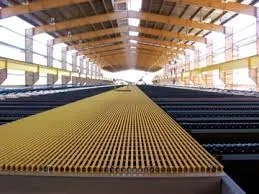
-
 Afrikaans
Afrikaans -
 Albanian
Albanian -
 Amharic
Amharic -
 Arabic
Arabic -
 Armenian
Armenian -
 Azerbaijani
Azerbaijani -
 Basque
Basque -
 Belarusian
Belarusian -
 Bengali
Bengali -
 Bosnian
Bosnian -
 Bulgarian
Bulgarian -
 Catalan
Catalan -
 Cebuano
Cebuano -
 China
China -
 China (Taiwan)
China (Taiwan) -
 Corsican
Corsican -
 Croatian
Croatian -
 Czech
Czech -
 Danish
Danish -
 Dutch
Dutch -
 English
English -
 Esperanto
Esperanto -
 Estonian
Estonian -
 Finnish
Finnish -
 French
French -
 Frisian
Frisian -
 Galician
Galician -
 Georgian
Georgian -
 German
German -
 Greek
Greek -
 Gujarati
Gujarati -
 Haitian Creole
Haitian Creole -
 hausa
hausa -
 hawaiian
hawaiian -
 Hebrew
Hebrew -
 Hindi
Hindi -
 Miao
Miao -
 Hungarian
Hungarian -
 Icelandic
Icelandic -
 igbo
igbo -
 Indonesian
Indonesian -
 irish
irish -
 Italian
Italian -
 Japanese
Japanese -
 Javanese
Javanese -
 Kannada
Kannada -
 kazakh
kazakh -
 Khmer
Khmer -
 Rwandese
Rwandese -
 Korean
Korean -
 Kurdish
Kurdish -
 Kyrgyz
Kyrgyz -
 Lao
Lao -
 Latin
Latin -
 Latvian
Latvian -
 Lithuanian
Lithuanian -
 Luxembourgish
Luxembourgish -
 Macedonian
Macedonian -
 Malgashi
Malgashi -
 Malay
Malay -
 Malayalam
Malayalam -
 Maltese
Maltese -
 Maori
Maori -
 Marathi
Marathi -
 Mongolian
Mongolian -
 Myanmar
Myanmar -
 Nepali
Nepali -
 Norwegian
Norwegian -
 Norwegian
Norwegian -
 Occitan
Occitan -
 Pashto
Pashto -
 Persian
Persian -
 Polish
Polish -
 Portuguese
Portuguese -
 Punjabi
Punjabi -
 Romanian
Romanian -
 Russian
Russian -
 Samoan
Samoan -
 Scottish Gaelic
Scottish Gaelic -
 Serbian
Serbian -
 Sesotho
Sesotho -
 Shona
Shona -
 Sindhi
Sindhi -
 Sinhala
Sinhala -
 Slovak
Slovak -
 Slovenian
Slovenian -
 Somali
Somali -
 Spanish
Spanish -
 Sundanese
Sundanese -
 Swahili
Swahili -
 Swedish
Swedish -
 Tagalog
Tagalog -
 Tajik
Tajik -
 Tamil
Tamil -
 Tatar
Tatar -
 Telugu
Telugu -
 Thai
Thai -
 Turkish
Turkish -
 Turkmen
Turkmen -
 Ukrainian
Ukrainian -
 Urdu
Urdu -
 Uighur
Uighur -
 Uzbek
Uzbek -
 Vietnamese
Vietnamese -
 Welsh
Welsh -
 Bantu
Bantu -
 Yiddish
Yiddish -
 Yoruba
Yoruba -
 Zulu
Zulu
frp ladder
The FRP Ladder A Perfect Blend of Strength and Innovation
In the realm of construction, industrial applications, and home improvement, ladders are indispensable tools. Traditionally, ladders have been made from wood, aluminum, or steel. However, the advent of Fiber Reinforced Polymer (FRP) has revolutionized ladder design and functionality. FRP ladders are becoming increasingly popular due to their durability, lightweight nature, and resistance to various environmental factors. This article delves into the features, benefits, and applications of FRP ladders.
Understanding FRP
Fiber Reinforced Polymer (FRP) is a composite material made from a polymer matrix reinforced with fibers, often glass or carbon. This combination imparts remarkable strength-to-weight ratios, making FRP an ideal material for various applications that require both durability and lightness. The integration of fibers into polymers enhances their mechanical properties, allowing them to withstand extreme conditions without compromising integrity.
Key Features of FRP Ladders
1. Lightweight Construction One of the most significant advantages of FRP ladders is their lightweight construction. Compared to traditional materials, FRP is much lighter, making it easier for users to transport and maneuver the ladder without physical strain.
2. Corrosion Resistance FRP ladders are inherently resistant to rust and corrosion, which makes them perfect for use in environments exposed to water, chemicals, or extreme weather conditions. This resistance is particularly valuable in coastal areas or industries that deal with corrosive substances.
3. High Strength Despite being lightweight, FRP ladders are exceptionally strong and can support substantial weights. This strength ensures that users can safely navigate the ladder without fear of breakage.
4. Non-conductive Properties For electricians and workers in the utility sector, FRP ladders provide an essential safety feature; they are non-conductive. This characteristic makes them an ideal choice for working near electrical installations where the risk of electric shock is a concern.
5. Durability FRP materials are highly durable and can withstand impact, reducing the risk of damage compared to traditional ladders. Their ability to resist UV degradation ensures a longer lifespan and consistent performance.
frp ladder

Applications of FRP Ladders
FRP ladders are versatile and find applications across various industries
- Construction Sites Durable and lightweight FRP ladders are extensively used in construction for accessing scaffolding or elevated platforms, enhancing safety and efficiency.
- Electrical Utilities Electricians prefer FRP ladders due to their non-conductive properties, which significantly minimize the risk of accidents associated with electrical work.
- Chemical Industries In environments where exposure to corrosive materials is common, FRP ladders provide a safer alternative, ensuring workers can navigate seamlessly without corrosion-related concerns.
- Marine Applications Given their resistance to saltwater, FRP ladders are ideal for marine purposes, including boat maintenance and repair tasks in shipyards.
- Home Use For homeowners seeking to improve their properties, FRP ladders offer a lightweight and durable option for routine maintenance tasks such as roof repairs, tree trimming, and painting.
Conclusion
The integration of FRP into ladder design has transformed how we think about ladder safety and functionality. With their lightweight construction, corrosion resistance, high strength, and non-conductive properties, FRP ladders provide an innovative solution for various applications. As industries increasingly recognize the benefits of these advanced materials, FRP ladders are set to become the standard in safety and reliability for both professional and personal endeavors. Whether you’re a contractor on a job site or a homeowner tackling a DIY project, investing in an FRP ladder is a step towards enhanced safety and efficiency.









